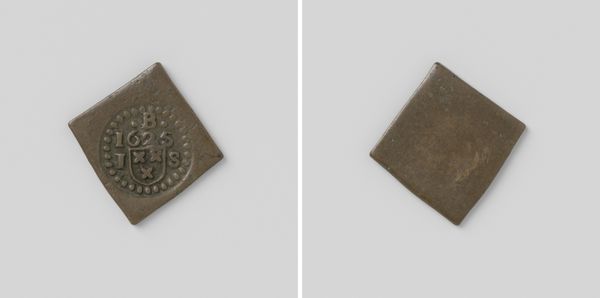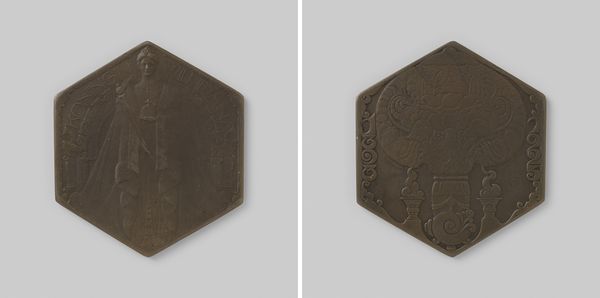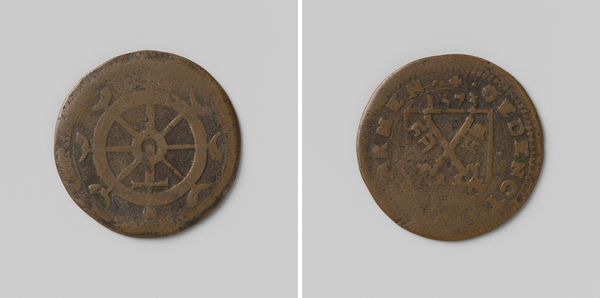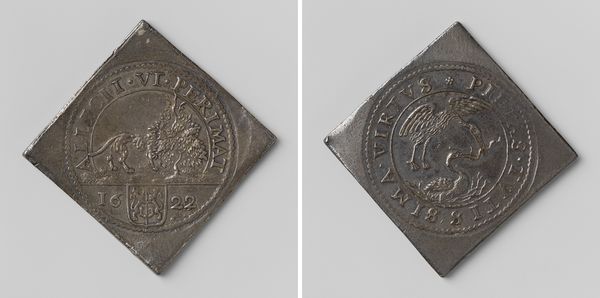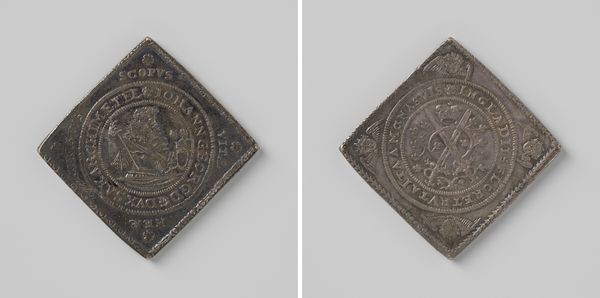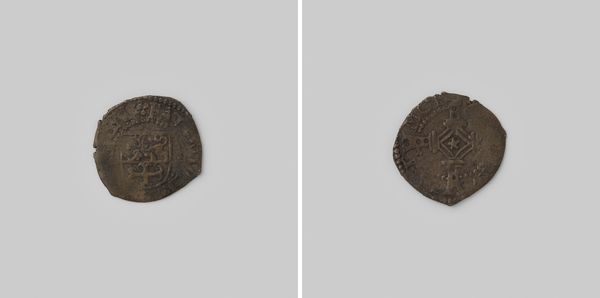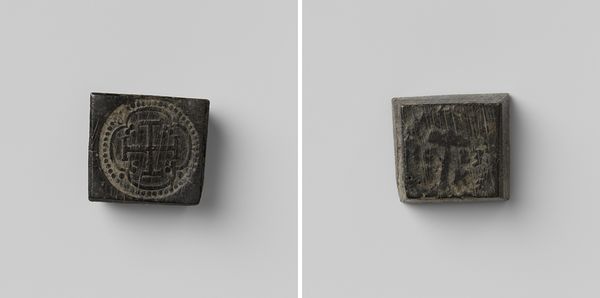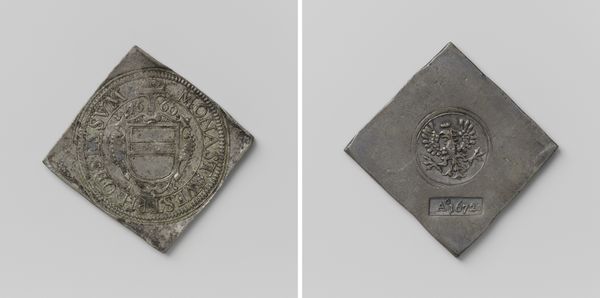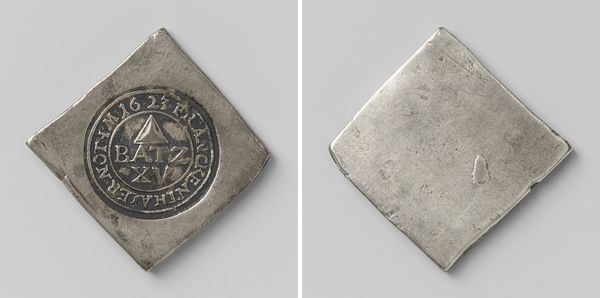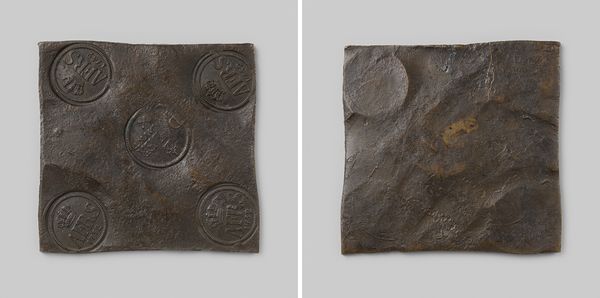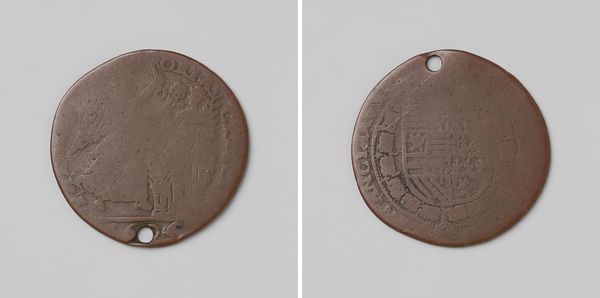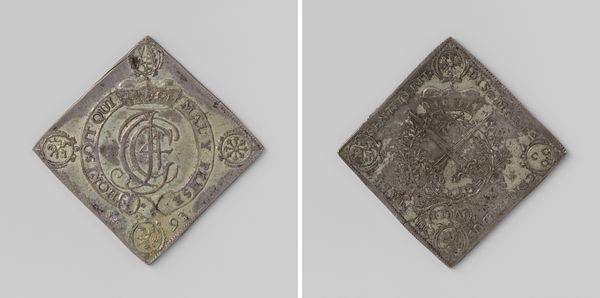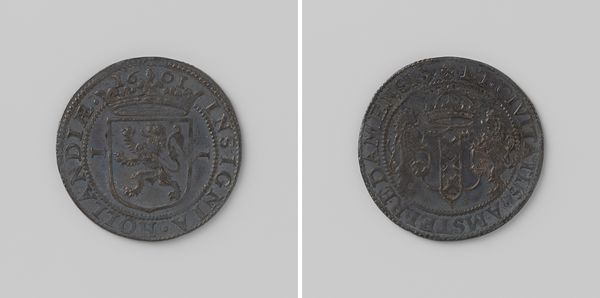
metal, relief, sculpture, engraving
#
portrait
#
medieval
#
metal
#
sculpture
#
relief
#
sculpture
#
engraving
Dimensions: height 2 cm, width 1.8 cm, weight 0.88 gr
Copyright: Rijks Museum: Open Domain
Editor: Here we have what appears to be a metal relief sculpture, titled "Karel, koning van Engeland," dating somewhere between 1626 and 1685. I'm immediately struck by the raw, almost utilitarian nature of the material and the somewhat crude engraving. What can you tell me about this piece, looking at its construction? Curator: From a materialist perspective, let’s consider the labour embedded in this seemingly simple object. What type of metal do you think this is, and what processes would have been used to create this engraving? It's not simply about depicting Charles, but about how his image is reproduced and consumed. Editor: I would guess some kind of base metal, perhaps pewter or even lead, given the color and texture. The engraving looks like it would have been done with fairly simple tools. The whole piece has an air of mass production. Curator: Exactly. Consider this relief in contrast to, say, a unique painted portrait. This metal form facilitates the widespread dissemination of the royal image. This implies that production techniques would emphasize creating identical objects quickly. Where would such production most likely be located, and by whose hands would it be created? Editor: Probably a workshop employing artisans...so maybe this shifts the understanding of the artwork to the realm of early industrial practices? A factory distributing representations of the crown? Curator: Precisely. And in what way would the material itself dictate the means and limits of this form of royal representation? Editor: I see what you mean. Using this base metal creates accessibility but it might be read as being somewhat… cheap, or not "high art", for royal propaganda. So it’s actually revealing social dynamics of the time. Curator: Indeed. This reveals a deliberate decision about production and circulation. Instead of seeing it just as "medieval," we can recognize it as a product of its economic and social environment. I hadn't thought of that interpretation of “cheap”. Very insightful!
Comments
No comments
Be the first to comment and join the conversation on the ultimate creative platform.
